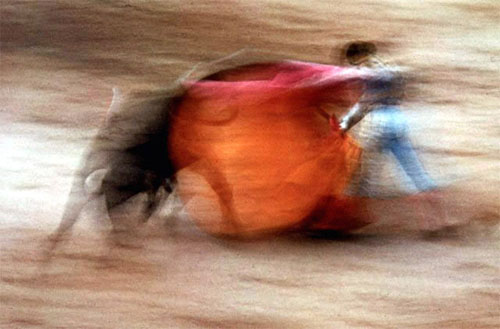Ernst Haas: Color, motion, and creativity
I love the work of Ernst Haas. He was a pioneer of color in photography often combined with experimental techniques.
Haas was born to artistic parents in Vienna, Austria in 1921, and a student he became a skilled painter. His father was a keen amateur photographer, but Ernst had no interest in photography until after his father’s death. He began to use his father’s darkroom to print negatives of family photographs, and his interest in photography quickly grew.
Haas moved to the United States in 1951 and began experimenting with Kodachrome color film. His work was published in many notable magazines. His photo essay on New York City published in Life magazine in 1953 was his first major color essay, and also Life’s first large-scale color essay.
Ernst Haas published four books, including “The Creation” (1971) and “In America” (1975). Hundreds of thousands of copies of “The Creation” were sold, and how the book came about is quite interesting. His laboratory assistant compiled a number of Haas’ existing photographs one day in his absence. When Haas returned to his photo lab, the assistant (whose name happened to be Michelangelo), showed him how a body of his work could be seen to have documented the creation of the world. The book has three sections:
- The Elements
- The Seasons
- The Creature
The images in the book use many different techniques and styles. One of my favorite techniques Haas uses for some of the images is double exposure. For example, the image below, “Spring” (1965) has an impressionist feel created by Haas using double exposure. The first exposure was out of focus and the second was in focus. Both images were slightly overexposed so that they would print with correct exposure when the images were combined. The camera was hand-held rather than on a tripod.
“Spring”, Ernst Haas (1965)
Image reproduced under “fair use” doctrine.
Another technique that Haas used in several of his images was moving the camera during the exposure to give a sense of motion and movement. His image “La Suerta De Capa” is an amazing example this sense of motion and excitement combined with beautiful colors. As you can tell, this is very different from typical artistic photography of the 1950s, which tended to be strictly black and white.
 “La Suerte De Capa”, Ernst Haas (1956)
“La Suerte De Capa”, Ernst Haas (1956)
Image reproduced under “fair use” doctrine.
Ernst Haas died in 1986, shortly after being recognized with a Hasselblad Award for his work. He left behind a wonderful legacy of early color work, experimental techniques, and beautiful art.
Source: “The Creation”, by Ernst Haas, New York: Penguin Books, 1976
Source: Ernst Haas Profile, LensCulture

